Deepa S Reddy, who we know from Instagram as @paticheri, discovers that making a palm toddy fruit cake for Janmashtami is hardly a departure from tradition.
Turns out, cakes make good traditional sense, too. Get past the need for leavening agents, icings or even an oven, and it’s clear we’ve been making them as offerings since at least the Rig Vedic times.
“If it’s his birthday then make him a cake!”— this was, for years, my boy’s response to the question of what to prepare for Gokulashtami. The birth of Krishna, on one stormy ashtami – the eighth night of the dark lunar fortnight in Bhadrapada (August-September) – was not an event we usually marked with much pomp, mostly because we’d lived outside India for too many years, and had lost touch with finer Indian cosmological rhythms. But birthdays were always marked, whether our own or those of saints and gurus, or indeed, that of Krishna himself. A celebratory cake just made good sense.
Turns out, cakes make good traditional sense, too. Get past the need for leavening agents, icings or even an oven, and it’s clear we’ve been making them as offerings since at least the Rig Vedic times. The “apūpa” of Rig Vedic hymns is widely understood “as a round cake of barley meal or rice flour, baked in clarified butter on slow fire”, sweetened with honey taken from the smaller of two kinds of honey bee, and, “probably, the earliest sweet preparation known to us”, probably also next in importance only to the milk-based sweets of later ages. Griffith elaborates on the Rig Veda’s “fivefold gift” to Agni as “an offering of grain, gruel, curdled milk, rice-cake, and curds” (1.40.3). A variety of similarly prepared rice cakes make frequent later appearances: Kaṇapūvam of the 5th century Jain canonical texts uses broken rice, the grammarian Pāṇini will reference cūrṇitāḥ apūpāḥ (stuffed apūpas) circa 5th century BCE, and Patañjali commenting on Pāṇini in the Mahābhāṣya some two hundred years later describes cakes made of flour and sesamum, fried in ghee. The physician-scholars of the Ayurvedic tradition, Caraka and Vāgbhaṭa, too, speak of pūpas sweetened with milk and sugarcane juice (kṣhīrekṣurasa pūpakaḥ), and five cake types differentiated by their baking method – indicating familiarity with both charcoal baking and frying in the centuries before, and into the common era.1
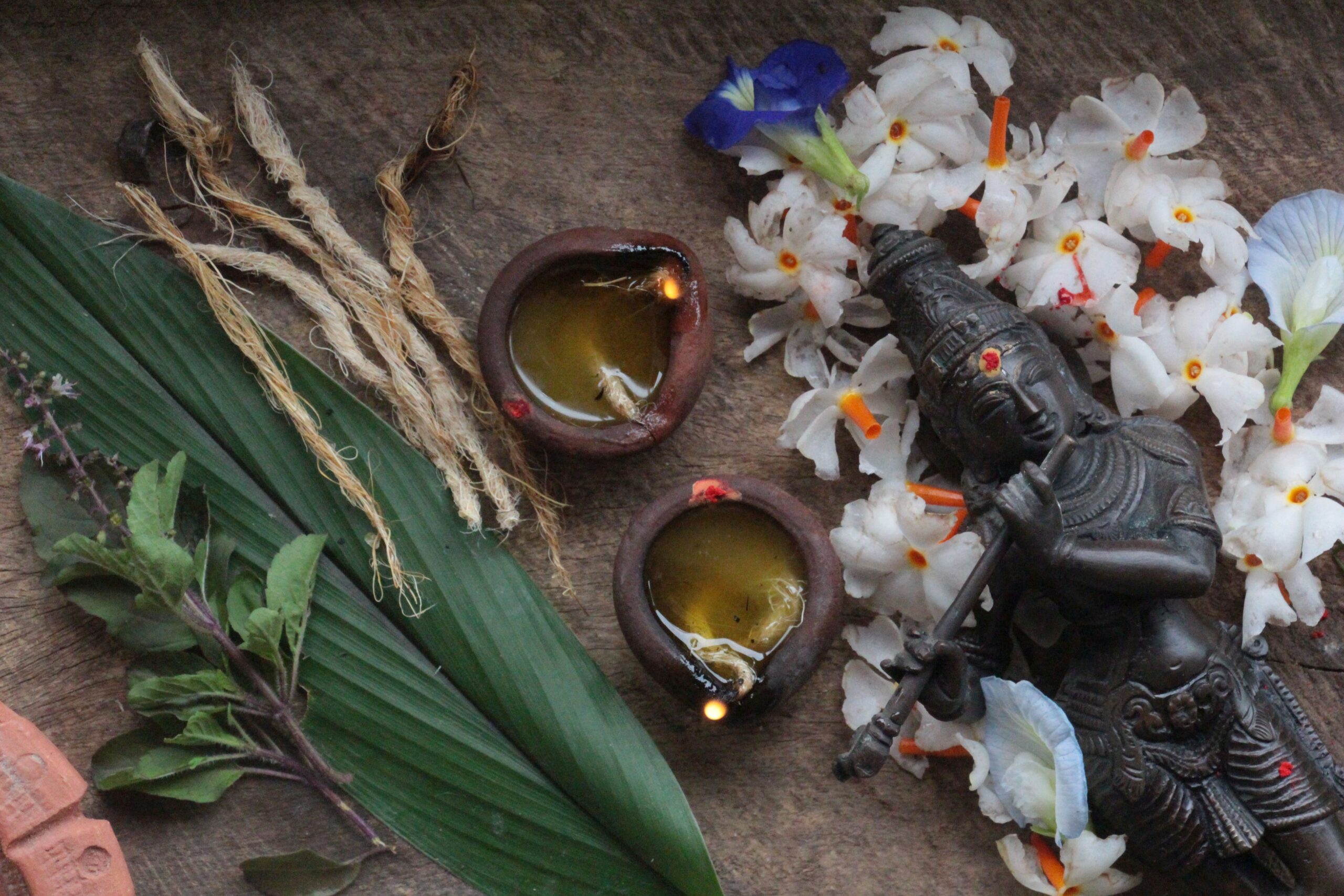

All these are, linguistically and culinarily, antecedents of the present-day appams of the south, pithas of the east, and a vast array of puas marking an arc across the top of the subcontinent – among countless other regional interpretations, all invariably cooked in ghee (ghṛtavantam). Amalu, as malpua is known in the Puri Jagannath temple’s lexicon, is one notable example, likely introduced into the Shreemandira Chappan Bhog in the 16th century, during the reign of Gajapati Prataparudra Deva and under the sway of Gaudiya Vaishnava bhakti. In Maharashtra and Gujarat, anarasa made for Deepavali is still sometimes just called “apoopa”.
Both instances suggest that long ago apūpas turned from being “sacrificial cakes” into ceremonial or celebratory offerings. They now collectively comprise a unique, improbably diverse, and entirely indigenous repertoire of desi cakes: usually sweet but also savoury, thin or thick, roasted or fried, wheat or rice-based, the speciality of this community or that, but always perfectly delectable meal-cakes worthy of divine oblation.
For Krishna, then, it was just a matter of finding the right one.
It was hard not to love this idea, this evening brimming with anticipation, this notion that a child would come indoors and leave his footprints everywhere, this intimacy in a festive event of such large import.
Thudding into our Auroville garden as though in response to our question, or in solemn announcement of some momentous event to come, are the panampazham – the bright orange, fibrous, and somewhat forbidding fruits of the toddy palm tree. In unripe form, they are macheted open to extract ice apples. Come the rainy months, however, the ice apples go to seed, the mesocarp becomes pulpy and fragrant, and the ripe fruits drop onto forest floors and roadsides where they ferment quickly and are devoured even more rapidly by mealybugs unless they are rescued first for human consumption. Then, extracting panampazham pulp is a tedious process of coaxing pulp from recalcitrant fibres; its taste has a tinge of bitter and takes time to acquire. Yet the panampazham or taal is beloved on all of India’s eastern coast and not uncommonly added to either kheer/payasam or rice cakes. It’s both a seasonal variation in those two purest, simplest, and most symbolic of all food offerings, and, I’d like to think, something of a rejoinder to prevailing orthodoxies. The panampazham is a wild fruit, after all, harvested only after it has touched the ground.
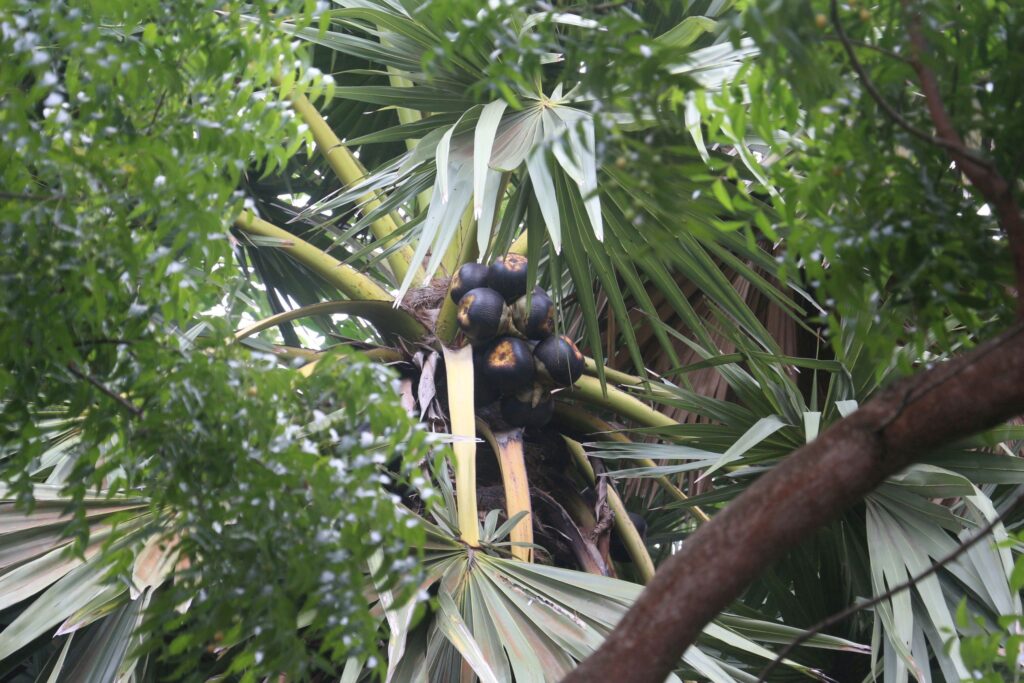
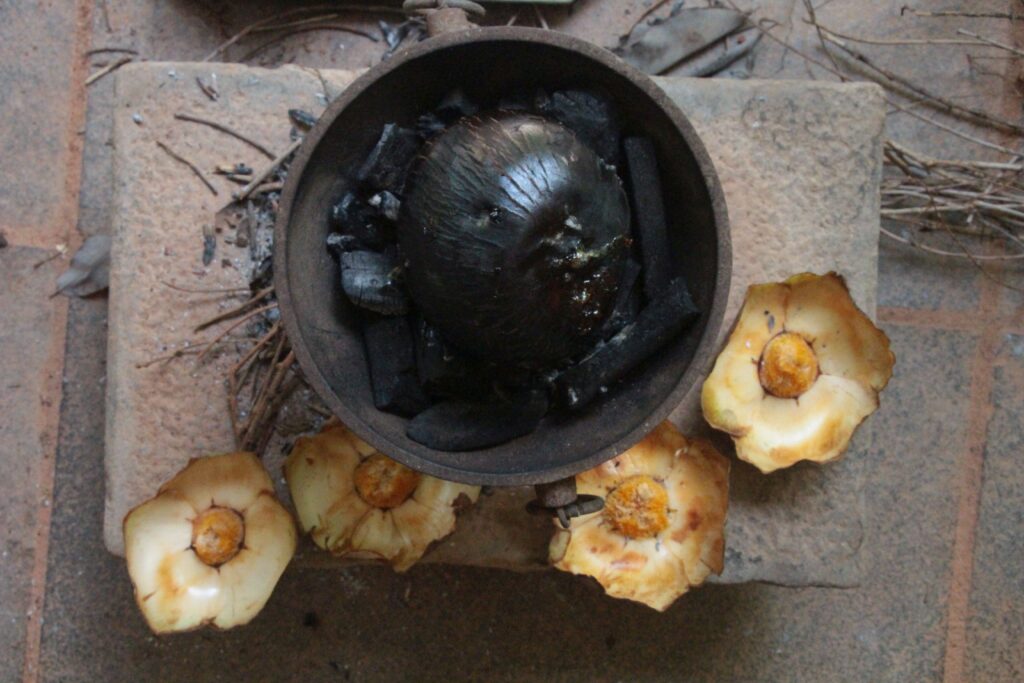
My own memories of panampazham are as sparse as those of Gokulashtami. I only ever heard of the sutta [roasted] panampazham, but stories of roasting the fruit over open fires to turn it smoky and dripping-delicious were the stuff of rustic village legend and every adult’s nostalgia for times bygone, even when both fruit and open fires were still very much in use. Likewise, I have scant recollections of walking into this or that mami’s home in the evening, seeing puja shelves cleaned and overflowing with flowers, lamps lit, incense burning, butter of course and – the very best part – little footsteps created with rice flour slurry and the impression of a clenched fist leading from the front door to the place where Krishna stood, at the centre of every Universe. Only a handful of such recollections, and yet such larger-than-life impressions. It was hard not to love this idea, this evening brimming with anticipation, this notion that a child would come indoors and leave his footprints everywhere, this intimacy in a festive event of such large import.
It was only much later in life that I would realise that this, indeed, was the method of Vaishnavism – “this tremendous love for father, for mother, for brother, for husband, or child”, a worship through the senses and through daily acts of feeding, and why not? It is as Swami Vivekananda exclaimed to Sister Nivedita, that she did not yet understand India, for we Indians are “man-worshippers”: the Gods are but within.2 And they must be lured to the table with sweets and butter and the scent of ghee; they must be invited, called, beseeched, coaxed, and cajoled to come with every trick of a sensory repertoire. So, making malpua “birthday cake” on Janmashtami, coloured orange and scented sweet from the addition of our beloved panampazham, became one of our standard tricks.
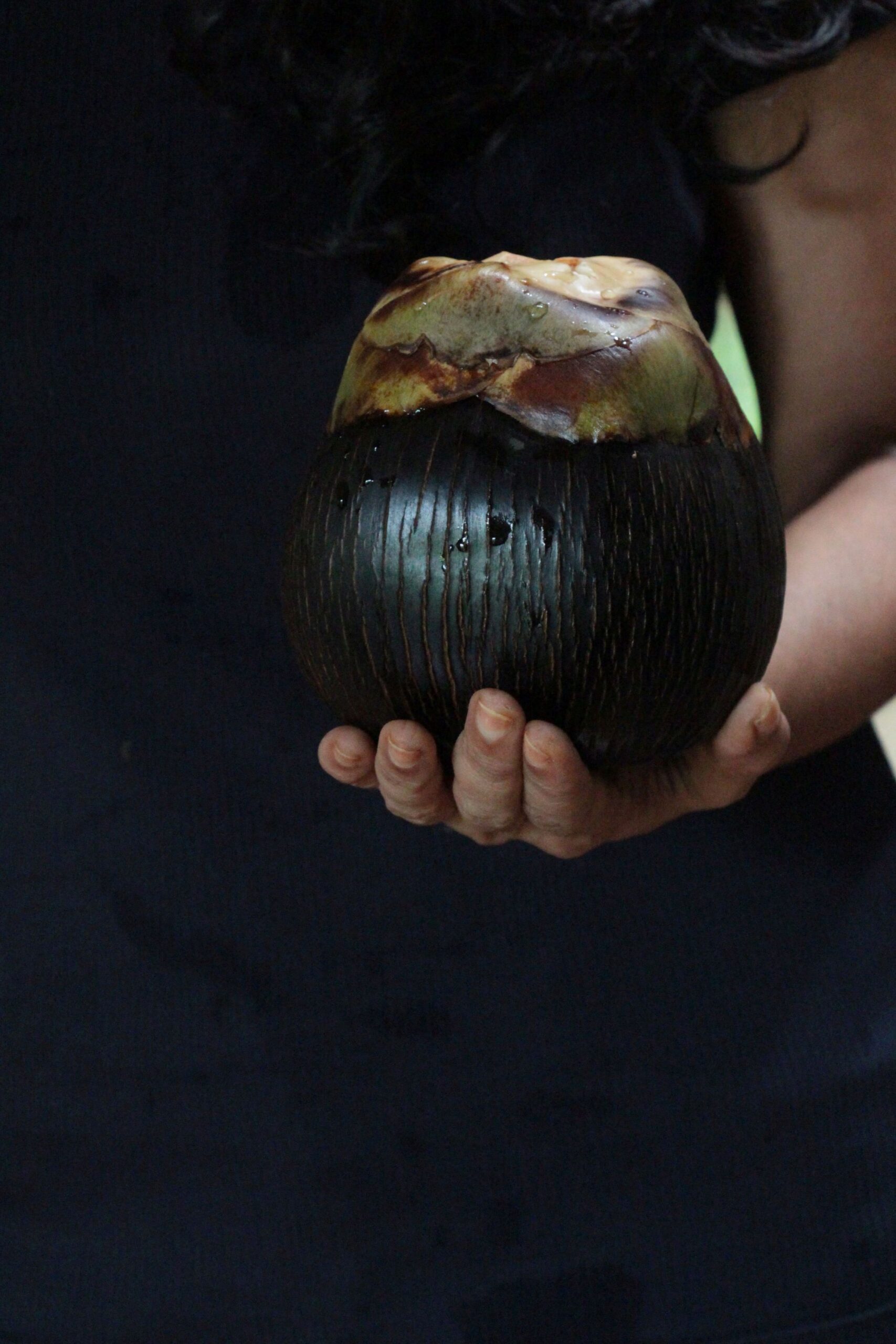

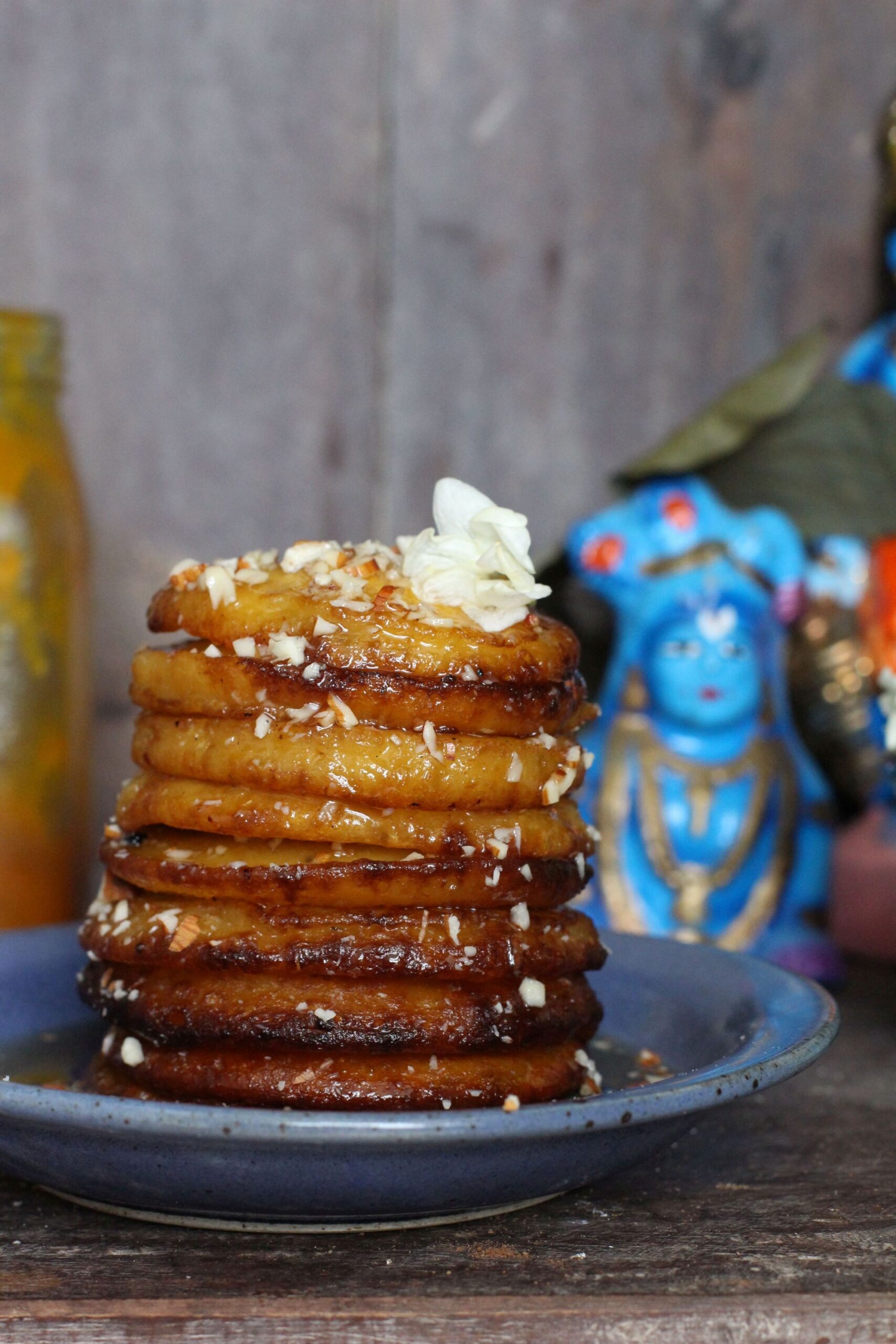
But alongside love for Krishna, trust. “If you pray,” says Sri Aurobindo to a disciple, “trust that he hears. If the reply takes long in coming, trust that he knows and loves and that he is wisest in the choice of the time. Meanwhile quietly clear the ground, so that he may not have to trip over stone and jungle when he comes.”3
“Will he like it?” I’d ask the boy whose idea it had been to make a cake. He’d shrug. “I like it,” he’d say, adjusting a makeshift crown with a peacock feather: dressed like Krishna, of course. And we’d set about clearing a path for the footprints of the child about to arrive, with panampazham malpuas set out at the trail’s end, of course.
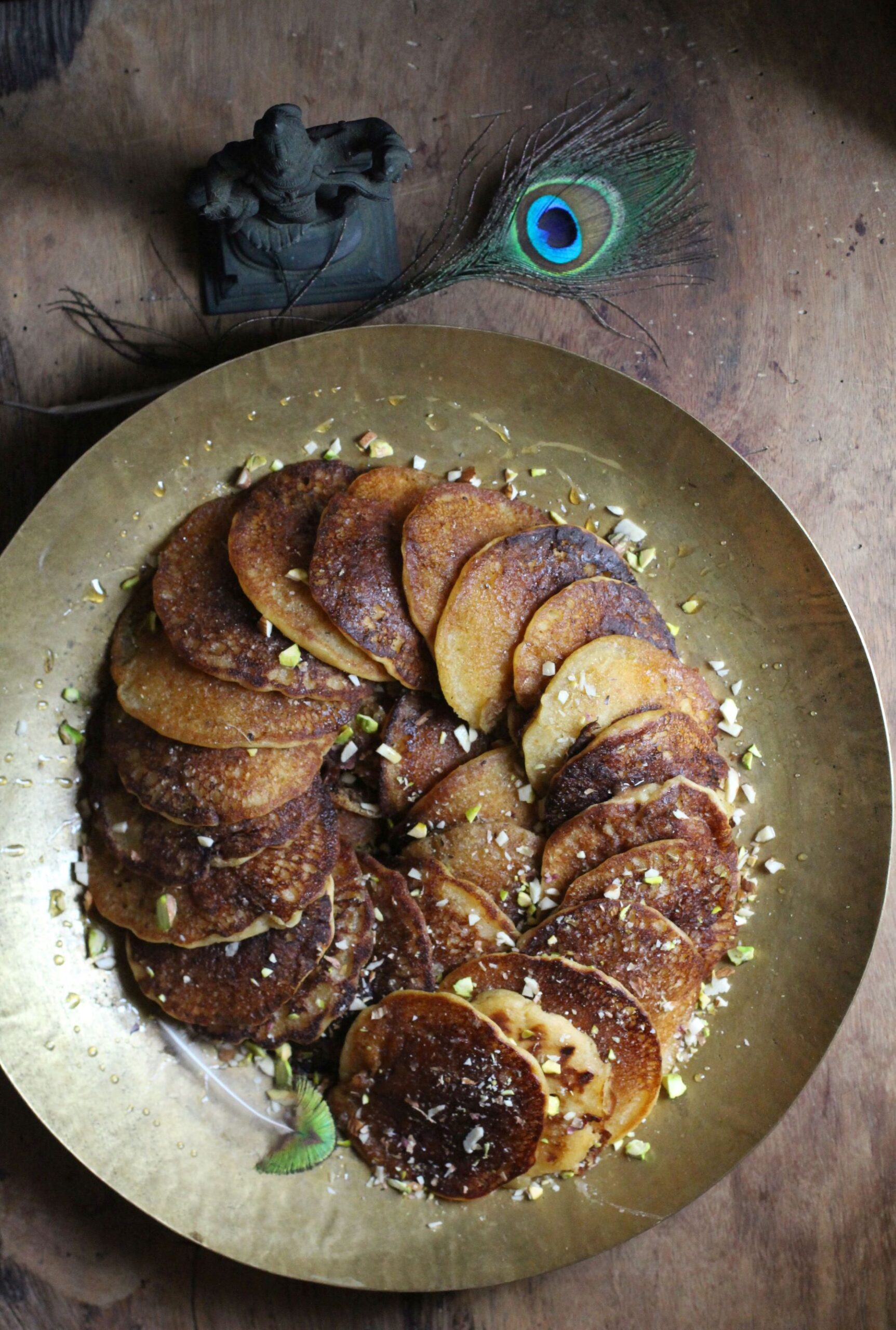
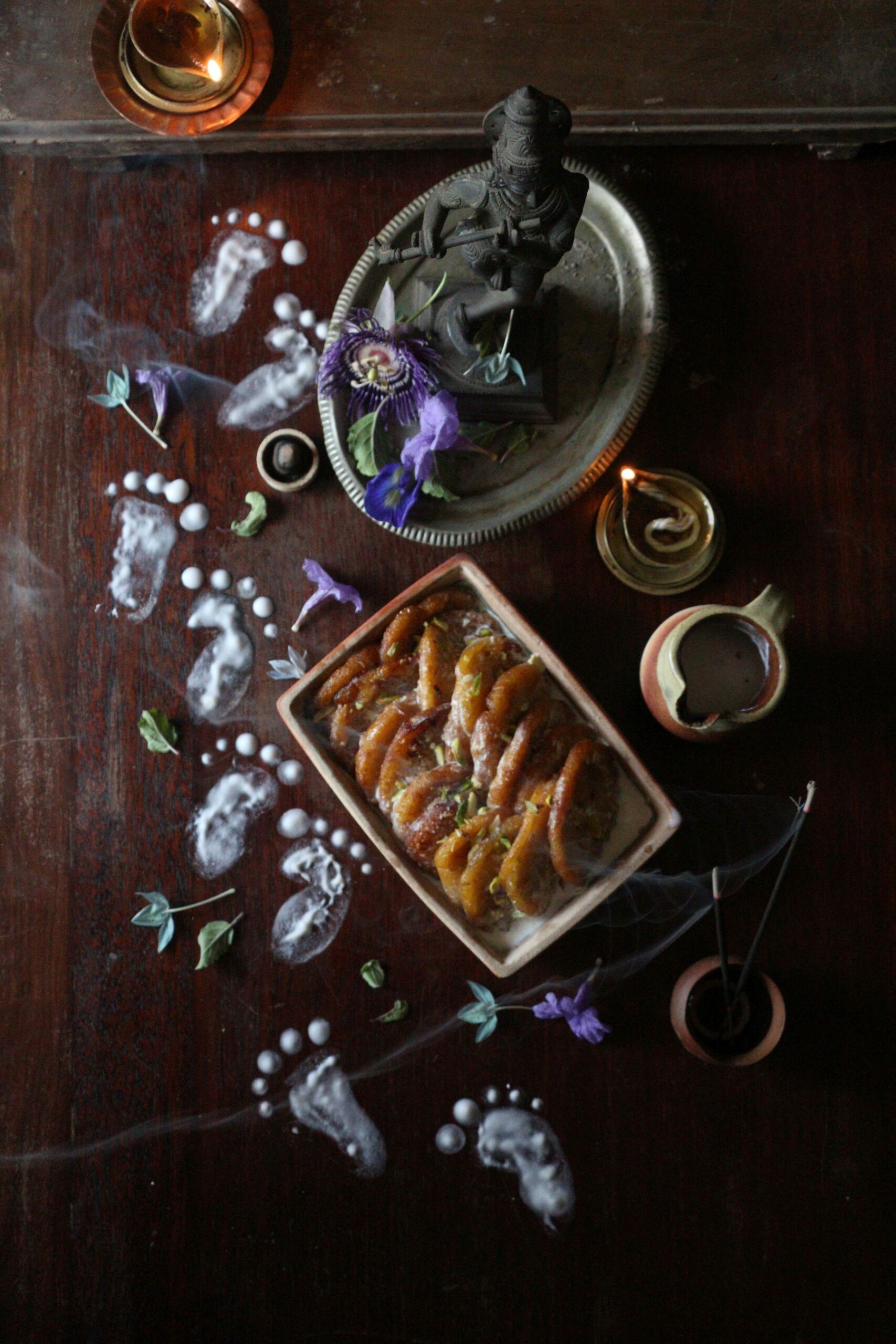

- Definitions and descriptions of the evolution of apupa are from Om Prakash’s extensive literary, epigraphic, and archaeological survey of Food and Drinks in Ancient India (New Delhi: Munshi Ram Manohar Lal, 1961); pp. 19, 250, 284. Ralph T.H. Griffith’s 1896 translation of the Rig Veda can be found here. ↩︎
- Sister Nivedita, The Master as I saw Him (London: Longmans, Green and Co., 1910); p. 264. ↩︎
- Sri Aurobindo, Letters on Yoga II (CWSA 29, Pondicherry: Sri Aurobindo Ashram Press, 2013); p. 486. ↩︎
With thanks to Richa Chitgopekar, Sweta Biswal, Preeta Rout, and Sheetal Bhatt for the details that helped me write.

